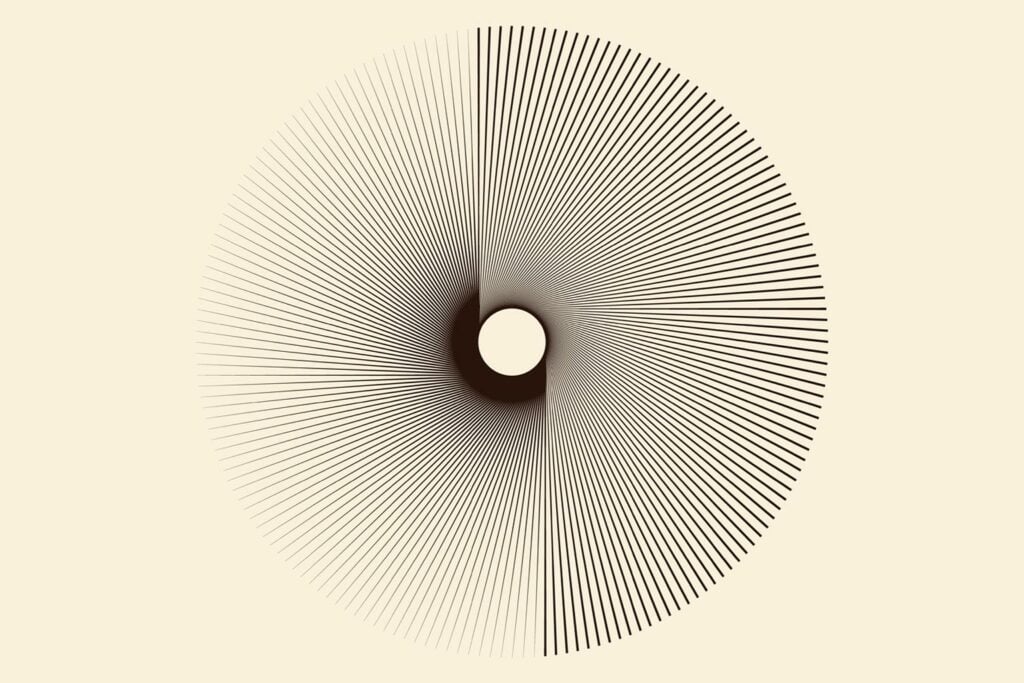One of the most common questions we encounter during our initial consultation is what type of patent application do I need? What are the differences between a design patent vs utility patent? The answer to that question depends on what the client is looking to protect. Is it the functionality or ornamental design of the invention? Design patents protect new, original, and ornamental designs of items of manufacture. In other words, they protect what a product looks like, not how it functions.
However, one similarity between design patents and utility patents can be found in the scope of legal rights and remedies granted to a patent holder; a design patent grants its owner(s) the exclusive right to exclude others from making, using, selling, offering for sale or importing into the United States products having ornamental characteristics and designs shown and described in your design patent.
Having these exclusive rights in your design patent ensure that you have enforceable legal rights through the federal court system, United States Patent and Trademark Office, and e-commerce platforms against an infringing party for the duration of the 15-year design patent term.
Fort those e-commerce business owners, a design patent is undoubtedly one of your most valuable assets as it will allow you to immediately file an intellectual property rights violation notice on platforms such as Amazon, eBay, ETSY, and Facebook where you can immediately remove infringing products from the storefront without having to retain an expensive attorney or wait for your suit to be filed in federal court.
When should a Design Patent be Filed?
When deciding between a design patent vs utility patent, it’s important to choose wisely. A design patent application should be filed as soon as possible following the creation of a unique design because the U.S. operates as a first-to-file system. This means that the first person to file a design patent application for an original creation or design is presumed to be the first to invent the particular design. If you were to disclose or publicly use the contemplated design prior to filing a patent application, you could lose the ability to obtain a patent for it later in the U.S. and other countries with similar systems.
A design patent application should also be filed as soon as possible because of the duration of the application process overall. On average, the process can take anywhere from 1 to 3 years to acquire a patent and will depend upon several factors such as whether the design will be issued immediately, whether modification of the application is required, or if there are any rejections from the United States Patent and Trademark Office, (USPTO).
Additionally, it is worth noting that it is illegal for a third-party who has mere knowledge of the creation, but did not invent it, to file their own design patent application before you because only the inventor can file for patent protection. Nonetheless, the surefire way to avoid this hypothetical scenario and similar complications involving third parties is to file a design patent application as soon as the design is finalized. Similarly, if you have made your first offer to sell your design or a novel product embodying your design, or have already publicly disclosed or used your design, you must file your design patent application within 1 year from first disclosure or risk abandoning the invention.
On the other hand, you can also obtain design patent protections prior to implementing your design, but such designs are subject to definiteness and enablement requirements. Enablement requires that your specification describes the design to the extent that an ordinary designer should be able to recreate it. Likewise, definiteness dictates that the scope of the claimed design needs to be clear to a reasonable certainty. A skilled patent attorney will ensure that your application meets these and other requirements at the USPTO.
Do I Need a Design patent or Utility Patent – or both? Design Patent vs Utility Patent
As an inventor, the first question you must ask yourself is “what is your point of novelty?” Is your point of novelty in the functionality of the invention or the non-functional, ornamental design of the invention? Design patents are different than other types of patents in the U.S. such as utility and plant patents in several facets. According to the USPTO, the ornamental appearance of an article consists of its shape or configuration, the surface ornamentation applied to the article, or both.
Recall that design patent protections remain intact for approximately 15 years, while utility patent protections last for 20 years from the date of the filing of the application. However, both design and utility patent applications should generally be filed concurrently if you desire to protect both the aesthetic appearance of an item as well as its structural and functional aspects.
The requirements for filing a design patent application are also distinct insofar as the applicant must include drawings of the appearance of the article; a description of these drawings and ornamental appearance of the article; a single claim; and a brief description of the article and its intended purpose. These drawings must have solid lines representing the claimed features of the article and, if necessary, use broken lines for any unclaimed parts of the structure within which the claimed features are found.
What are the Advantages of a Design Patent?
One key advantage of a design patent application is that it takes significantly less time to obtain a design patent in comparison to utility patents which may take 2-3 years before receiving a Notice of Allowance. Design patents are also much more cost-effective to obtain than a utility patent and do not require follow-up maintenance fees.
Recall that you can obtain design patent protection on an entire article or object or just a portion of the article or object by filing a design patent application with the USPTO. A design, according to the USPTO, is a “set of visual ornamental features that are incorporated into or applied to a manufactured object.”
The first step in the application process is ensuring your design or invention has not been publicly disclosed for more than one year since the date of filing your design patent application. If it has, you are no longer eligible for patent protections under 35 U.S.C. §102(a).
The second step is to ensure your invention is both novel and non-obvious, meaning your design is different from all previous inventions (i.e., prior art) in its ornamental shape or appearance and those differences are not obvious variations to one skilled in the art.
If your design meets the patent eligibility requirements, it’s time to begin preparing your application and understand what views of your invention you must include. Remember, the drawing figures of your design patent application are the most important aspect of your application and must include the appropriate shading, broken lines, and indicate the “character and contour “of all surfaces of the any three-dimensional object.
Without the proper shading, your application may be rejected under 35 U.S.C. §112. Your application should include at least a perspective view, top and bottom view, left and right-side view, and a front and back view. Lastly, you may need a “broken line” statement to disclaim any portion of the views that are not going to be claimed.
Design patents may apply to the same product as a utility patent, but they protect specific aspects of it. There are also differences in the level of skill in the art of designs required for design patents. While the obviousness and specificity of the design is judged from the perspective of an ordinarily skilled designer, the requisite novelty of the design is judged from the perspective of an ordinary observer. Under this novelty distinction, a claimed design is considered novel if a comparable prior art does not disclose the design using the ordinary observer test. Ultimately, design patent protection is limited to the design applied to the article embodying it.
Should You File for a Design Patent?
When considering whether you should pursue a design patent, the general nature of your product is a solid starting point for this inquiry. You must ask yourself if the innovative, key features of your product are inherently structural, functional, or visual. If the appearance of the product is of the utmost importance or is unique, a design patent would be ideal. Companies and businesses carrying products that have a unique ornamental appearance that may not otherwise be protected by a utility patent most commonly seek design patent protection.
Design patents are also useful for startup companies seeking to establish their brand image and reputation by distinguishing their products from those of their competitors. Consequently, securing a design patent will prevent competitors in the same marketplace from appropriating a similar design. Some examples of when a design patent may be useful are for products with aesthetically distinctive features, a two-dimensional graphic design on a product, the graphical user interface (GUI) elements of software, and crafts, toys, and technologies that look unique in general.
Further, you should consider pursuing a design patent because of the many legal protections and commercial advantages it gives the patent holder. First, its protection in the form of prohibiting others from using, selling, or making articles that embody the patented design not only deters competitors from copying your design, but also provides grounds for bringing legal action against infringers. Additionally, obtaining a design patent brings many commercial opportunities because it will attract newfound customers as a result of distinguishing the design from your competitors.
Likewise, obtaining a design patent also may lead to licensing opportunities for the patent holder to generate revenue and expand the presence of the patented design in the marketplace without having to physically manufacture or sell the product itself. For the patent holder, having a design patent enables licensing to take place more efficiently because the licensee knows precisely what they are licensing. This is because the USPTO requires publication of design patents upon the granting of a design patent application. Finally, a design patent may also increase the overall value of a company’s investment portfolio, making it more attractive for potential investors.
How Long Does It Take to Get a Design Patent?
We all hear myths that it takes several years to secure a patent in the United States. While there may be some truth to these rumors, the pendency times (i.e., the time between filing an application and official action on your application) is published at the USPTO. Currently, the pendency time for a design patent application is 16.4 months[1]. This means that you should expect to wait 16.4 months after your applications filed to hear something substantive back from the USPTO Examiner. However, for a nominal fee of $400-1000 you can file a “Request for Expedited Examination” and take advantage of the USPTO’s “Rocket Docket.”
How Can I speed Up the Design Patent Process?
While the average pendency time of a design patent application is approximately 16.4 months, there are options available to expedite your design application and bypass over 77,000 applications that are waiting to be examined. The USPTO does offer an expedited design filing option that must be requested upon filing your application. Specifically, the USPTO states “from the date of filing, any applicants may request expedited examination of their design patent application by filing a “Request for Expedited Examination of a Design Patent” form (PTO/SB/27) along with the appropriate fee ($400-$800 depending on filing status), and compliant Information Disclosure Form at the time your design patent application is submitted to the USPTO.”
Though it’s one of most overlooked requests offered by the USPTO, it is highly recommended for businesses looking to accelerate their design patent prosecution time and receive a first action in approximately 2.9 months.
Why Work With a Patent Attorney?
There are numerous reasons why you should consult with a patent attorney if you are considering filing a design patent application. Design patent application allowance rates in the U.S. have a high cumulative success rate of approximately 83% for the current fiscal year. The Rapacke Law Group offers a money-back guarantee on all design patent filings meaning should your application not receive a Notice of Allowance for any reason, we would provide a full refund.
While the allowance rate for design patent applications is typically higher than for utility patent applications, the disparity in allowance rates for issued design patents for those who used a patent attorney compared to pro se applicants is greater. In 2020, the allowance rate for design patent applications filed with the assistance of a registered patent attorney was 88.6%, compared to 76.9% for pro se applicants.
Working with an RLG attorney inherently leads to a greater chance of approval on your application because they can identify the most effective strategies for protecting your design and aid you in navigating any potential setbacks that may arise throughout the process. Further, we are so confident that we will get your design patent allowed we are willing to offer a money-back guarantee.
This experience necessitates a higher quality of applications which meet the legal requirements for design patentability. Specifically, an attorney can best tailor each element of an application such as the feature description, the drawings figures, and your claim towards being patent eligible.
An experienced patent attorney can also help you develop advanced patent portfolio strategies on how to strategically position your portfolio for licensing and acquisition opportunities. All these valuable benefits save a great deal of time and expense for the design patent applicant. By working with our experienced patent attorneys, you will free up more of your time to devote to scaling your business.
At The Rapacke Law Group, we offer patent services to startups on a transparent, flat-fee basis, without the hassle of hourly billing or charges for calls or emails. Plus you’ll be covered by The RLG Guarantee, meaning you’ll receive a full refund of our fees if your design patent application is denied by the USPTO.
Still have questions about what type of IP protection is right for your situation? Take our Intelligent IP Quiz or schedule your free phone consultation to speak with an experienced IP attorney about protecting your software innovation.
[1] https://www.uspto.gov/dashboard/patents/design.html




